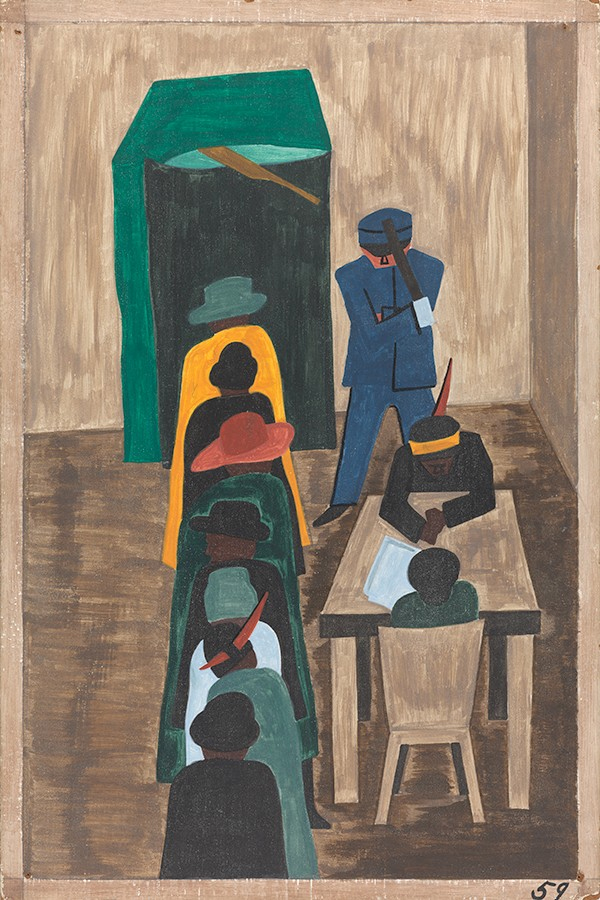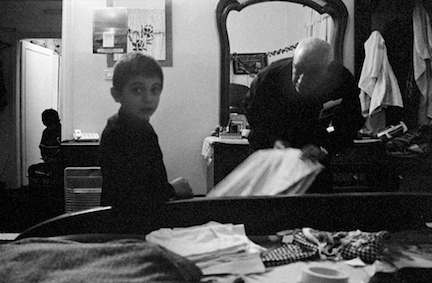
Jacob Lawrence, The Migration Series, Panel no. 59: In the North they had the freedom to vote., 1940–41. Casein tempera on hardboard, 12 x 18 in. The Phillips Collection, Washington, DC, Acquired 1942 © The Jacob and Gwendolyn Knight Lawrence Foundation, Seattle / Artists Rights Society (ARS), New York
Jacob Lawrence’s Migration Series resonates today in many ways, but this Election Day it seems especially fitting to highlight Panel no. 59, whose caption reads: “In the North they had the freedom to vote.” Kinshasha Holman Conwill, Deputy Director of the National Museum of African American History and Culture, puts it well in her oral history recorded in 2015:
“I think as with a lot of great art [The Migration Series] will always have meaning. It will have meaning because it speaks to the human spirit, to human aspirations, to courage, to fear, to love, to family. But this specifically because people will always be on the move, people will always be looking for something better, and that will mean that his work will never lose its resonance for generations to come.”
See the full video and learn more about all 60 panels of The Migration Series here.


